I’ve always been drawn to white kitchens.
There’s something calming about a space that feels clean, open, and simple. When I first moved into my home, I wanted a kitchen that felt fresh but didn’t scream for attention.
White cabinets and white countertops seemed risky at first, but it turned out to be the best decision I made.
If you’re wondering whether an all-white kitchen is worth it, this blog will help you figure it out.
I’ll walk you through why it works, what countertop materials to consider, how to avoid making it feel cold or boring, and some real-life examples.
You’ll find style tips, mistakes to skip, care advice, and photo ideas to bring your vision together.
Why Choose a White-on-White Kitchen?
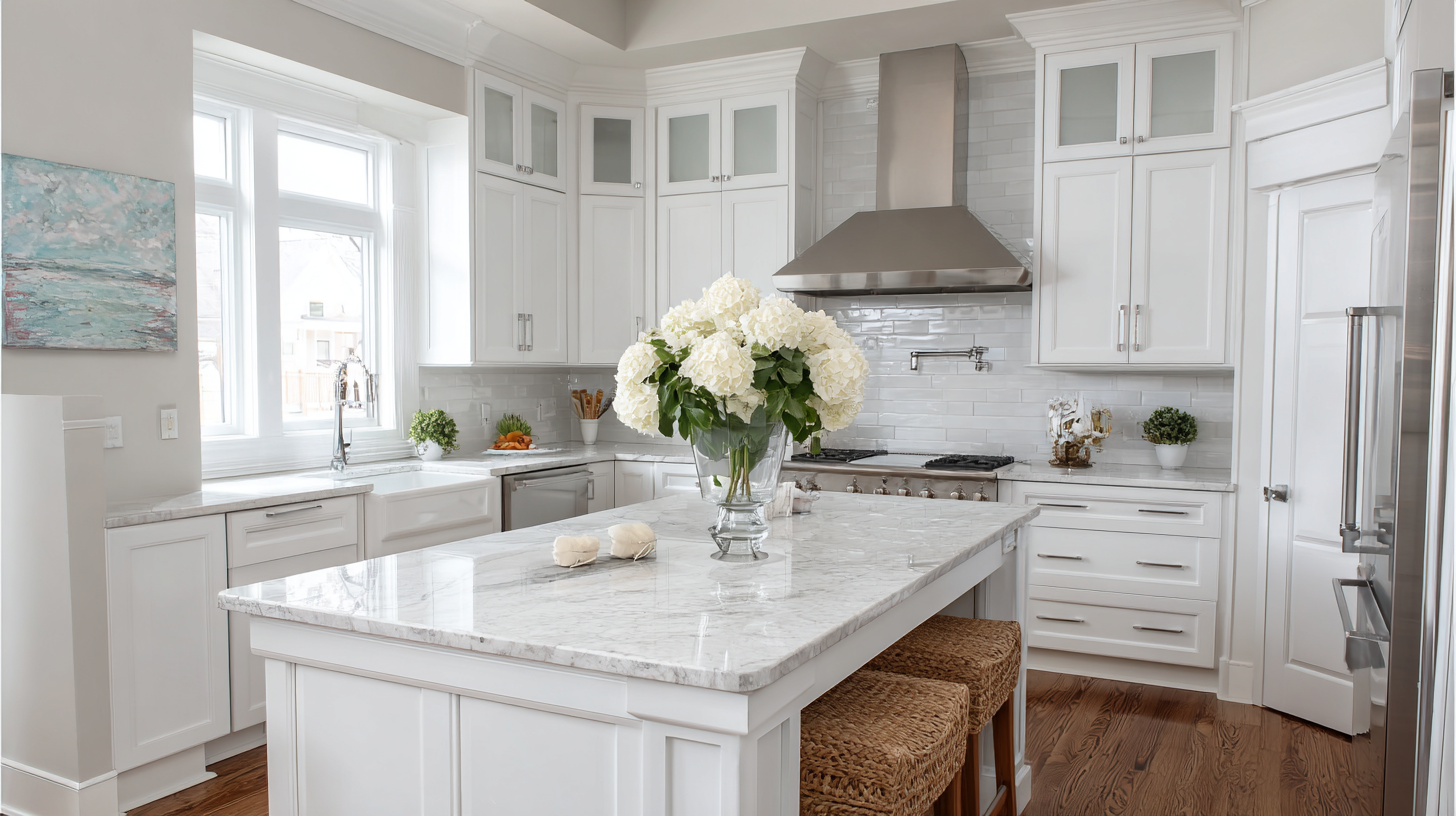
White-on-white kitchens have stood the test of time. They’re popular in modern homes, cozy cottages, and everything in between.
The reason? They offer a clean look that fits almost any style, and they’re easy to live with. If you’re starting from scratch or giving your space a refresh, this combo brings both function and a timeless feel.
They check a lot of boxes:
- They make any kitchen feel bigger and brighter
- You get a clean, airy vibe without trying too hard
- They are flexible, so you can update the look just by changing accents
- They reflect natural light, helping it bounce around the space
- They suit all kinds of styles, from classic to modern
If you’re working with a small kitchen or want a backdrop that stays in style, this pairing really delivers.
Popular White Countertop Materials for White Cabinets
Not all white countertops are the same. Some lean warm, others cool. Some need more care. I’ve tried a few myself and here’s what I’ve learned:
1. Quartz
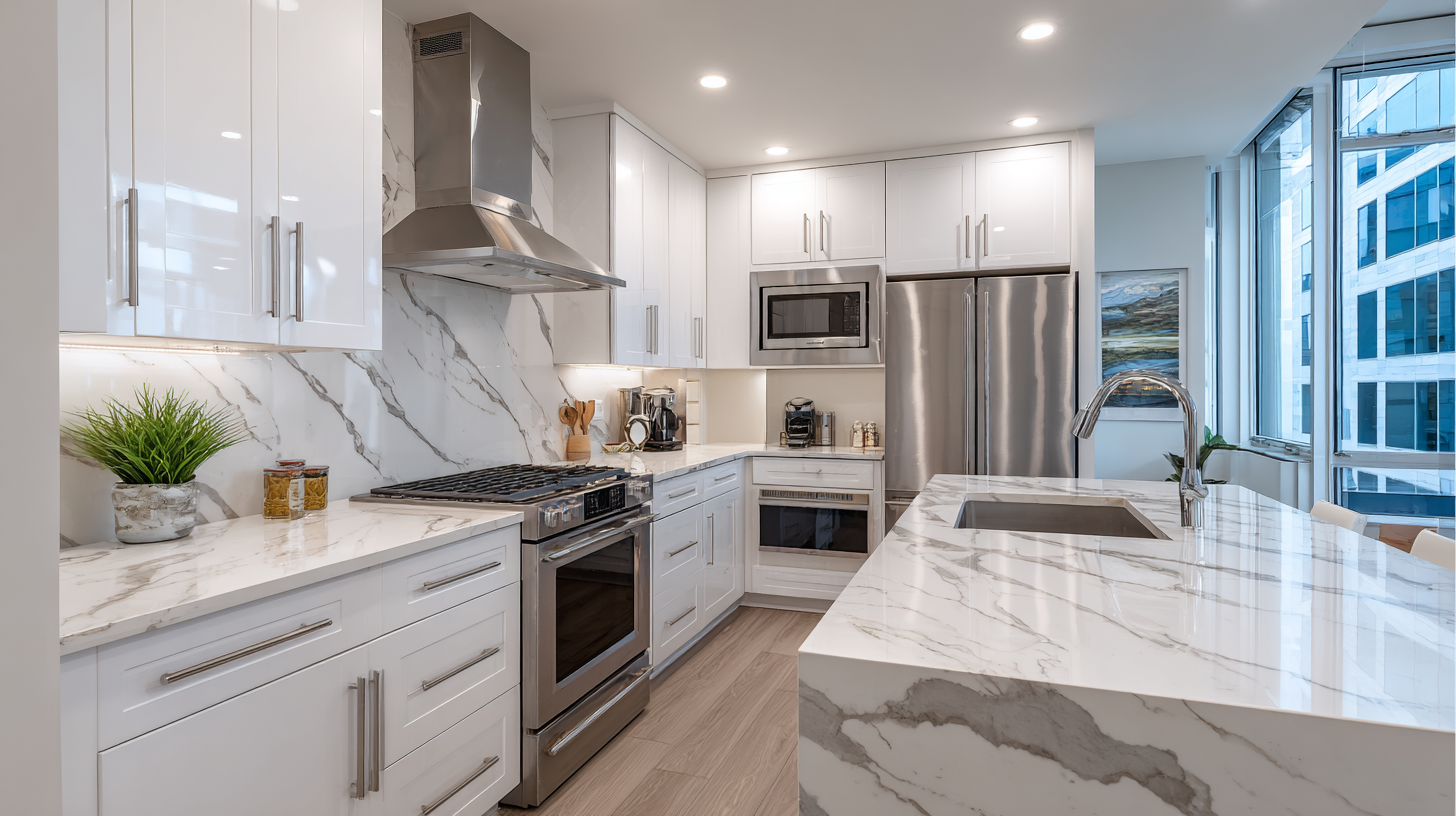
Quartz is my go-to for countertops because it’s super low maintenance. It doesn’t need sealing and handles spills like a champ.
It also doesn’t stain or scratch easily, which makes it great for daily use. I never worry about wear and tear.
Design-wise, quartz comes in soft whites, bright whites, and even marble-look styles. It fits any look I want without the hassle.
2. Marble
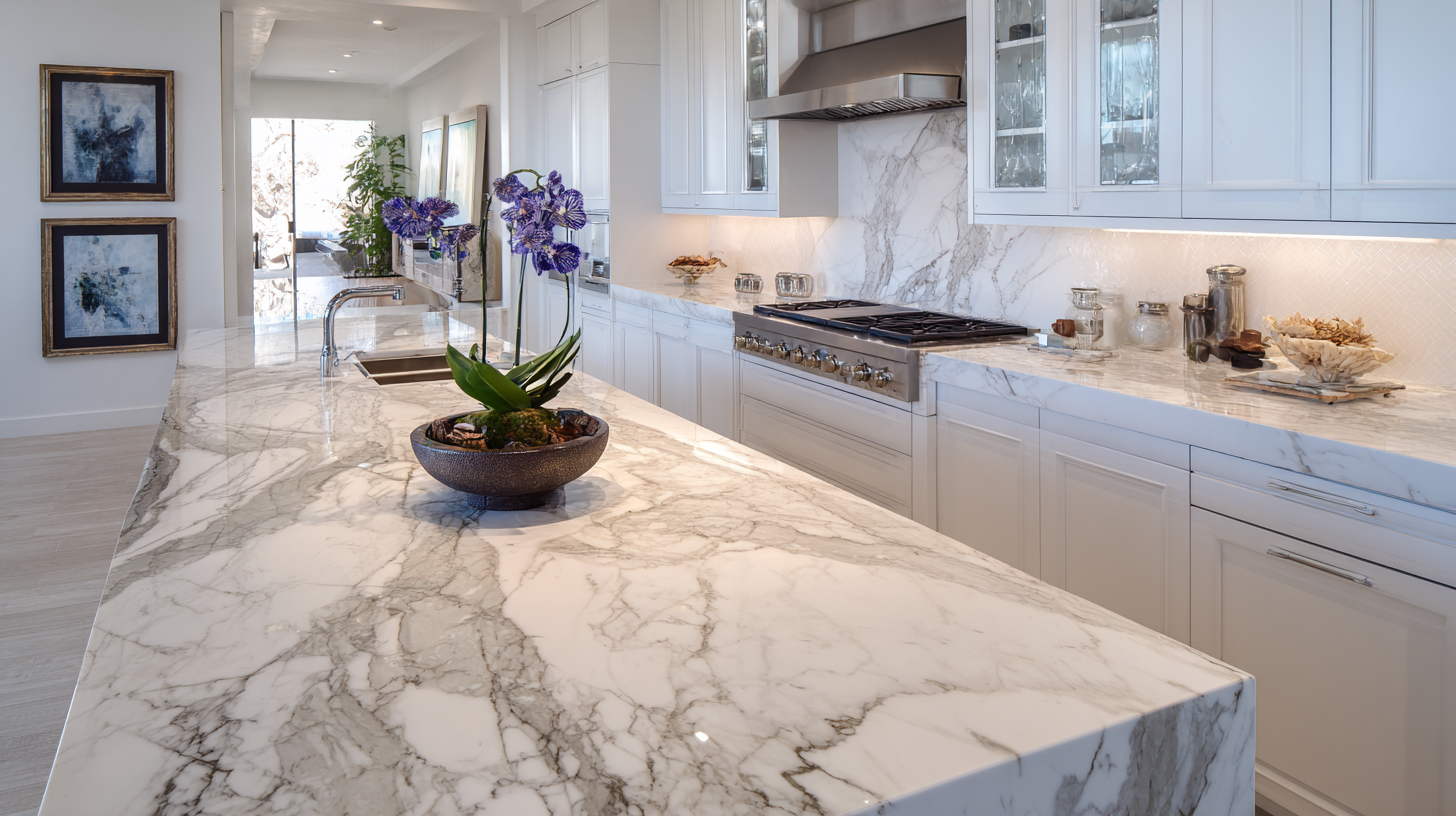
Marble looks stunning with natural veins running through the surface. It adds depth, movement, and a high-end feel to any space.
It’s known for its timeless beauty, but it does require care. Marble can stain, etch, and scratch pretty easily.
If you’re okay with a bit of aging and character over time, it can be totally worth it. Just know it’s more about beauty than durability.
3. Granite
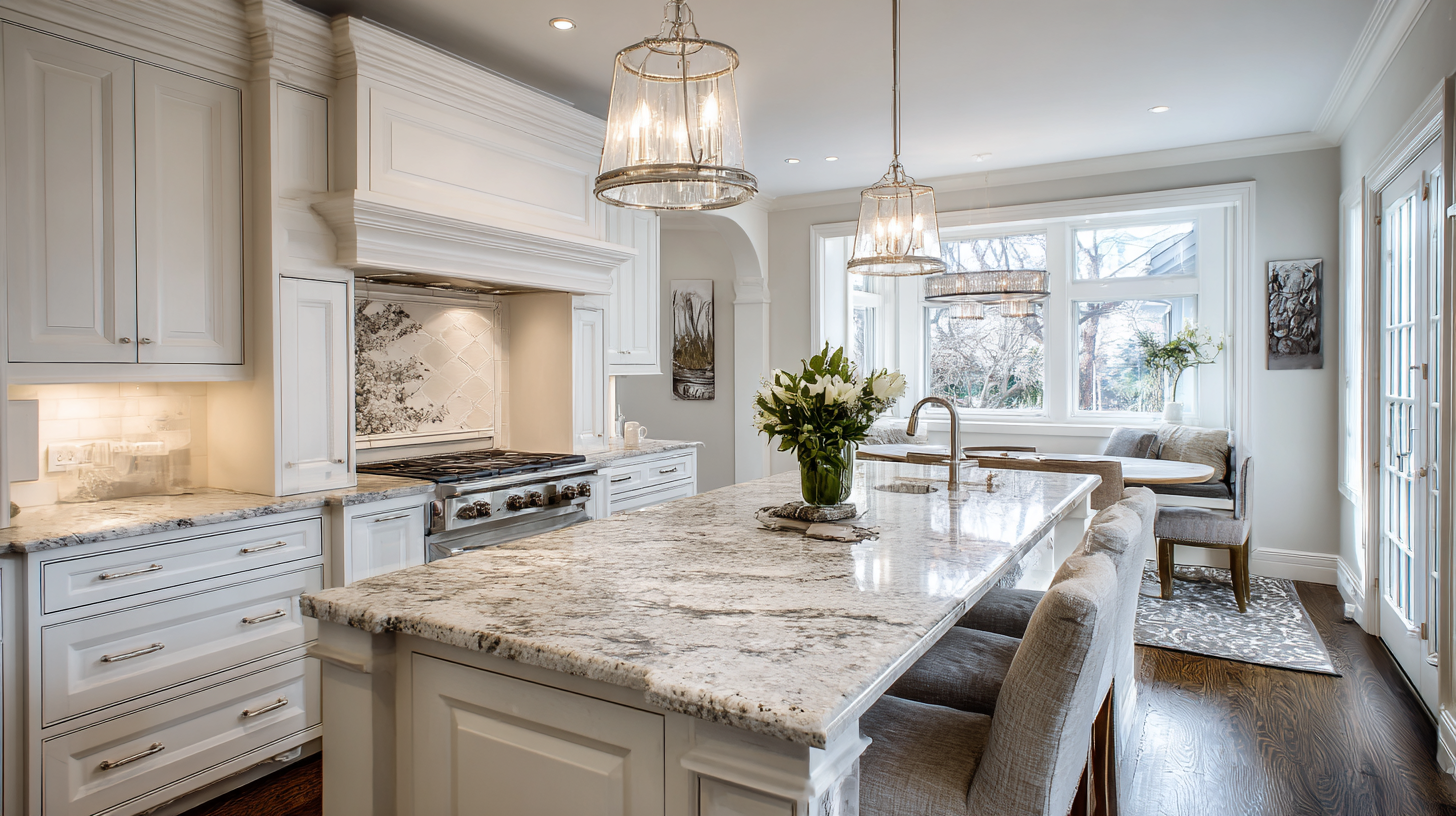
Granite offers a more subtle look with soft movement and natural speckles. It feels grounded and classic without being too bold.
It’s also super tough and heat-resistant, making it a practical choice for busy kitchens.
Even white granite often has flecks of gray, beige, or black. These tones help soften the overall look and add a bit of warmth.
4. Solid Surface (like Corian)
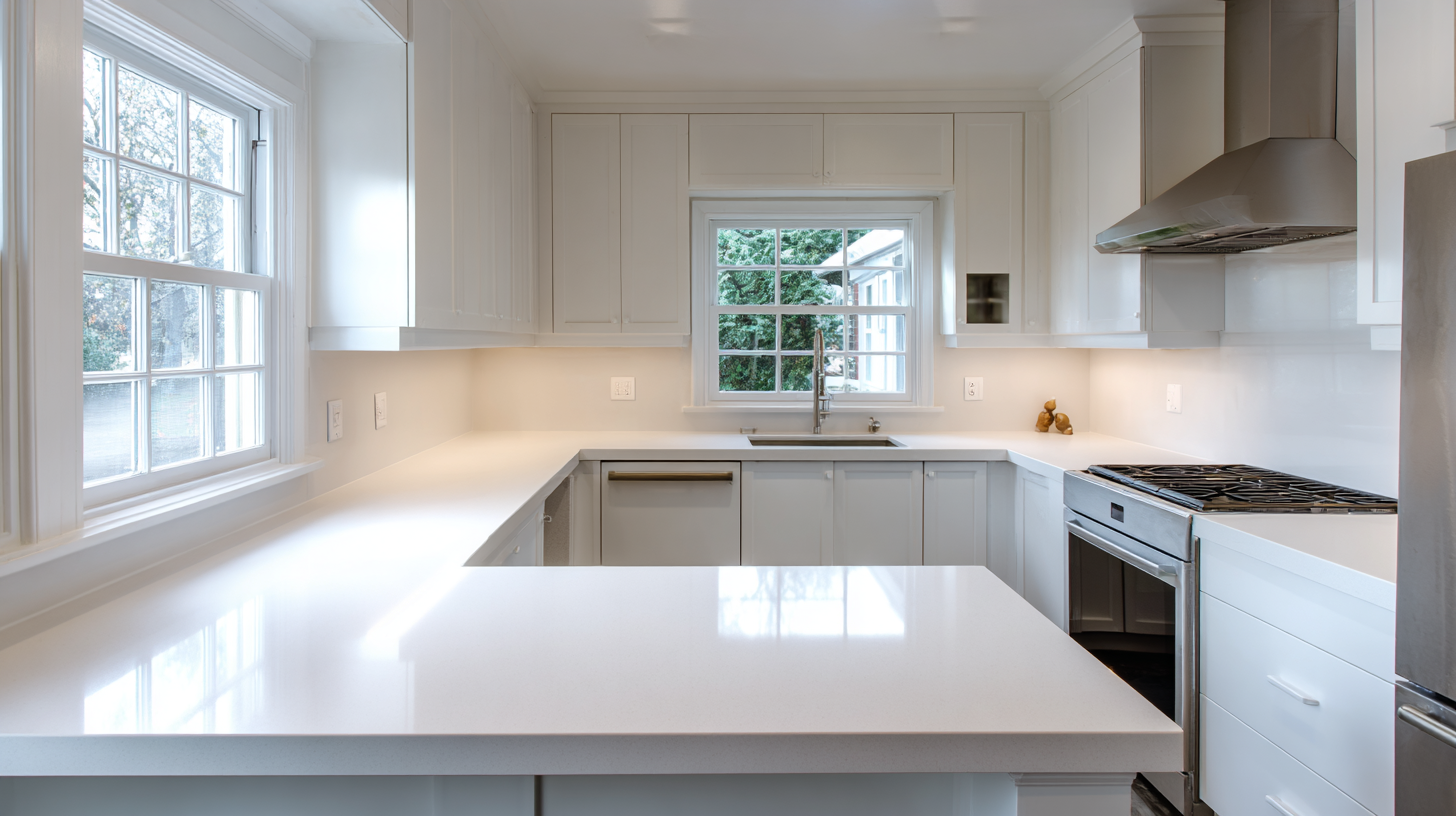
Solid surface materials like Corian offer a smooth, seamless look with no grout lines. It’s great for a clean, modern style.
The matte finish gives it a soft, subtle feel, which is perfect for low-shine spaces.
It’s easy to maintain and can be repaired if scratched, but it’s not very heat-resistant, so hot pans need protection.
5. Porcelain or Dekton
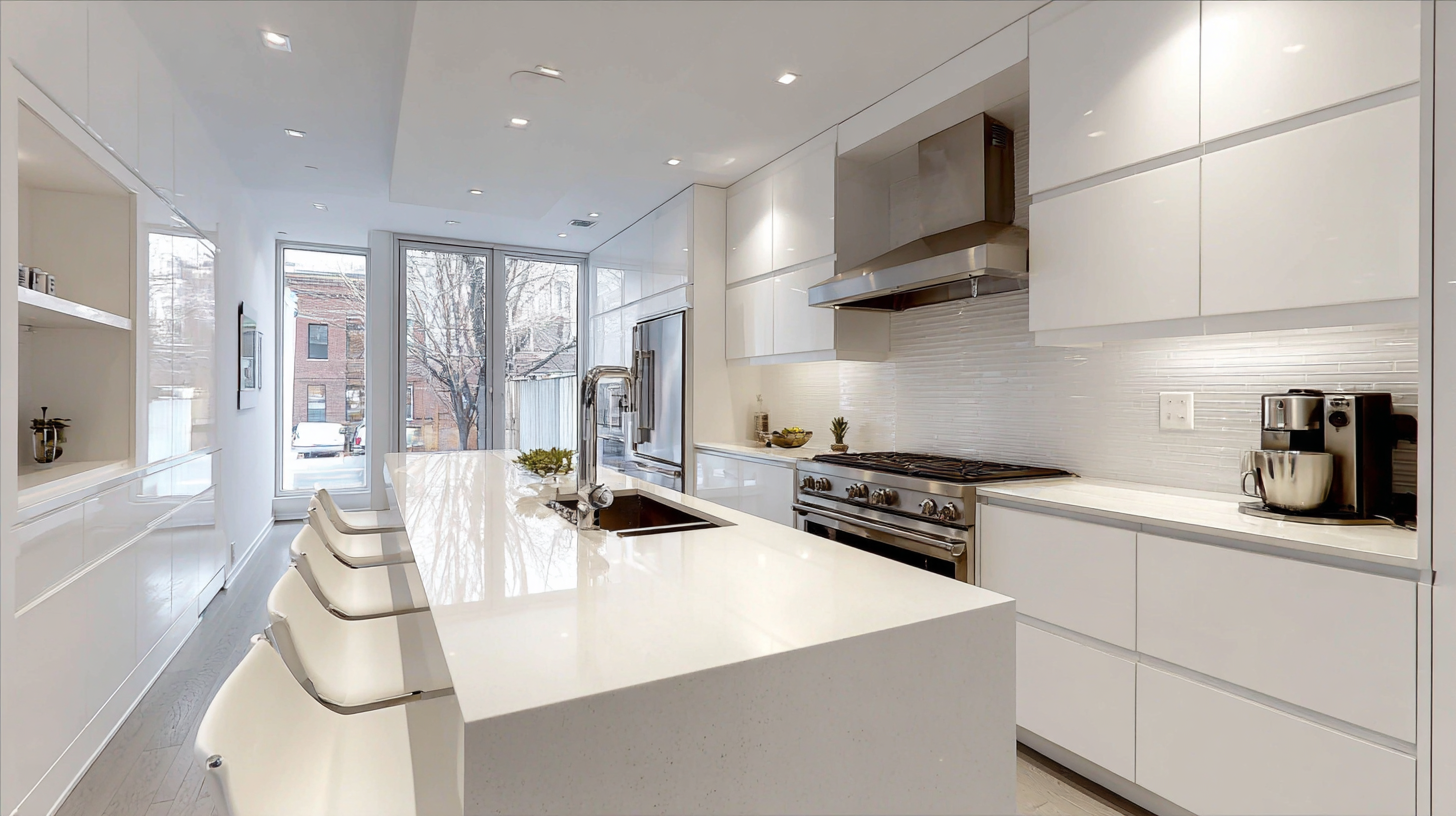
Porcelain and Dekton are super modern and built to last. They’re great for busy kitchens that need style and strength.
The sleek, thin profile gives a high-end, minimalist look. It’s perfect if you want something clean and sharp.
They can be pricey, but the finish and feel are hard to beat in a modern space.
Each of these materials has its own vibe and level of upkeep. It really comes down to how much maintenance you’re okay with and the kind of look you’re going for.
Pick what fits your lifestyle, not just your mood board.
How to Match Undertones in White Cabinets and Counters
This part matters more than people think. I learned the hard way when I paired a cool white quartz with creamy white cabinets. The counters looked bluish in daylight, and the cabinets looked yellow.
To keep things cohesive:
- Warm white cabinets go best with warm white counters (think cream, ivory)
- Cool white cabinets pair with bright, crisp counters (like Carrara marble look quartz)
- Test samples side-by-side in your actual lighting
- Natural daylight will expose clashing tones fast
Off-white cabinets with a soft white countertop can still work, just make sure there’s enough contrast so they don’t blend into each other awkwardly.
Design Styles That Work Beautifully with White on White
You don’t need to commit to just one style. I’ve seen white-on-white kitchens lean into all kinds of styles, and they all bring something unique to the table. It’s one of the reasons this combo stays so popular year after year.
1. Modern Minimalist
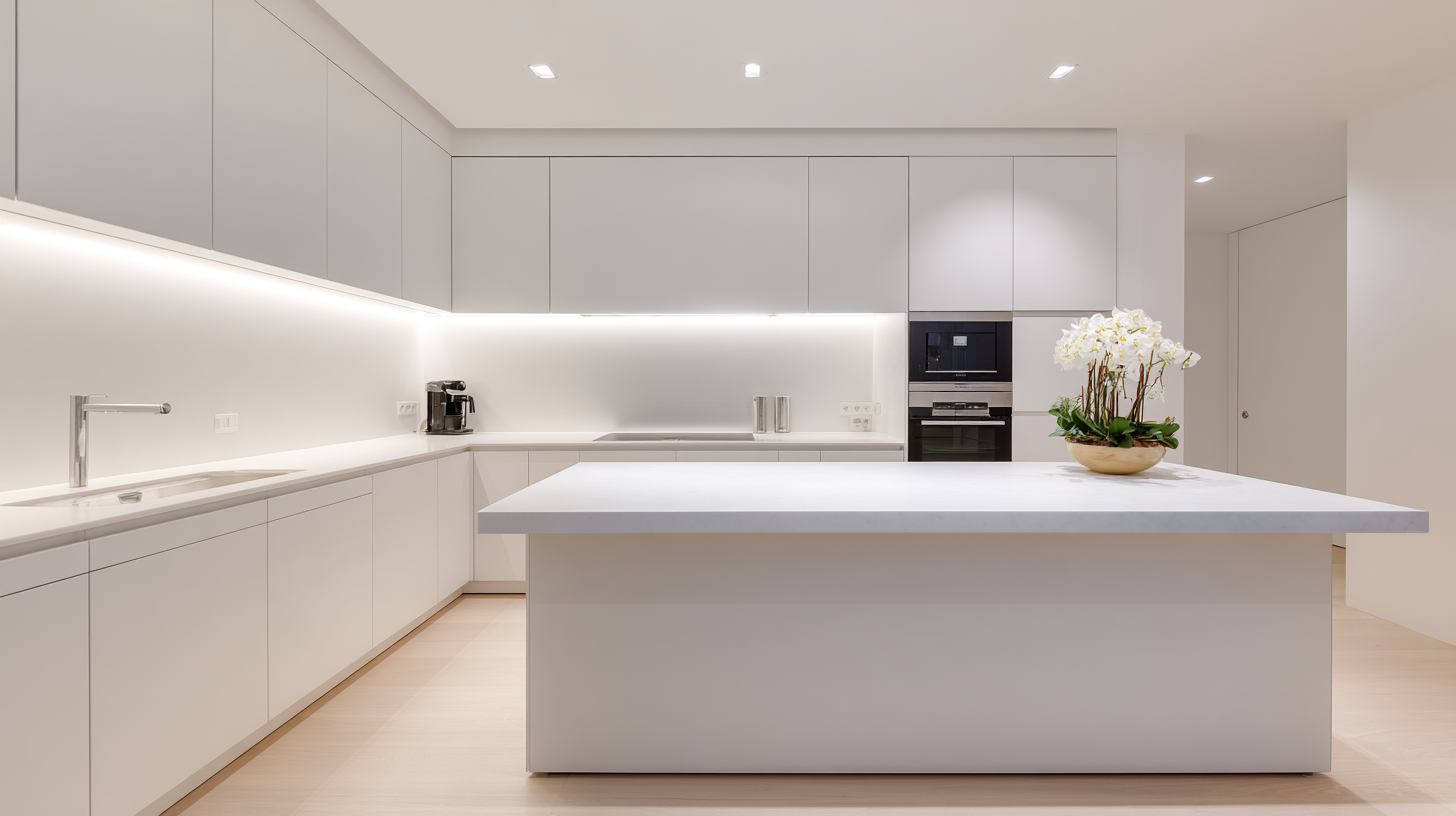
Flat-panel cabinets give a smooth, uncluttered look. They keep everything clean and simple. Matte countertops add softness without losing the sleek vibe. They pair well with modern surfaces.
Hidden handles and appliances keep the focus on clean lines. It’s all about subtle details and calm energy.
2. Coastal or Beach-Inspired
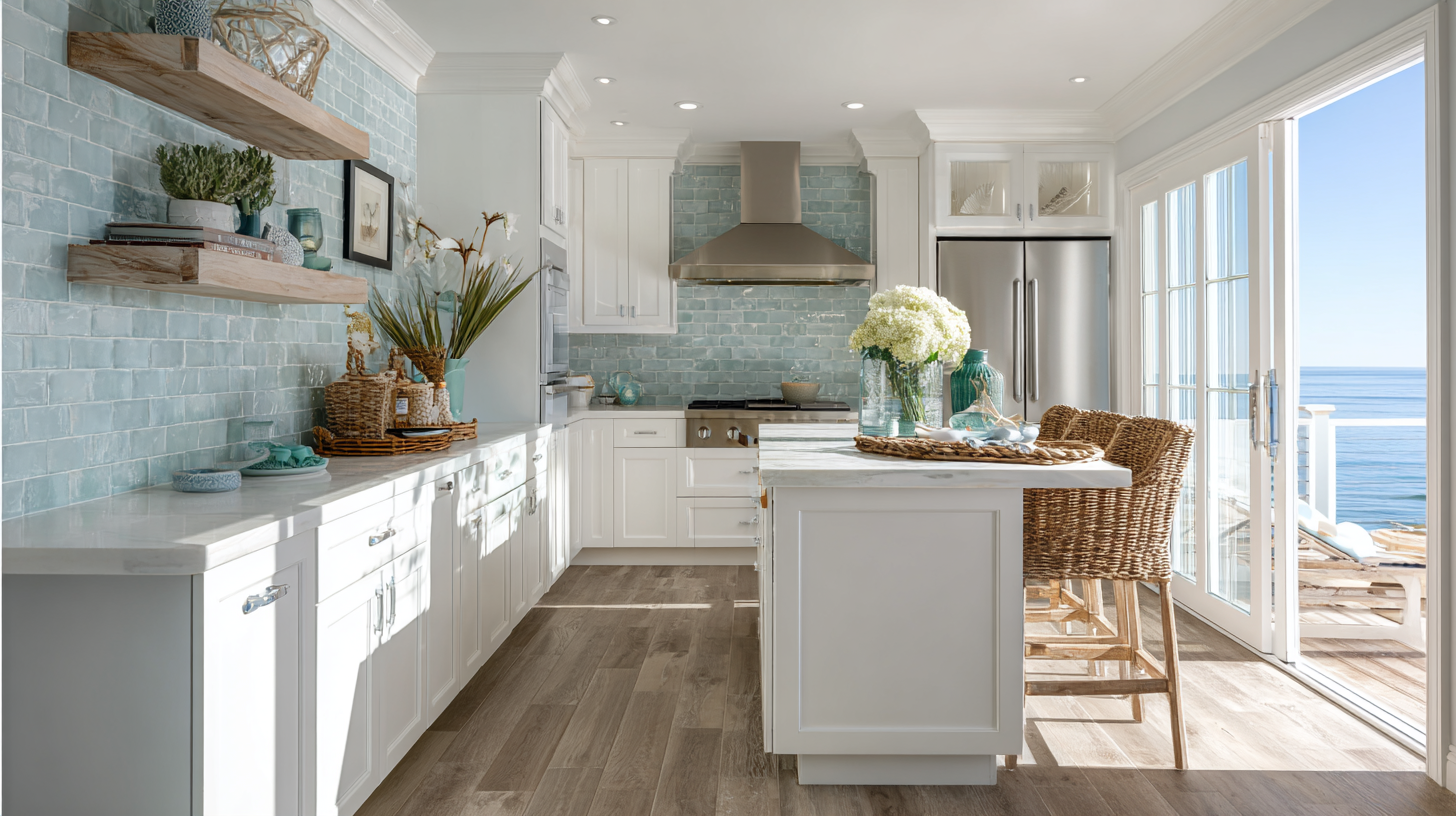
Light wood floors add warmth and a relaxed, breezy feel. They balance the white tones nicely. Glass cabinet doors keep things airy and open. They also show off pretty dishes or decor.
Blue or sea-glass tile accents bring in that ocean vibe. Just a hint of color goes a long way.
3. Farmhouse
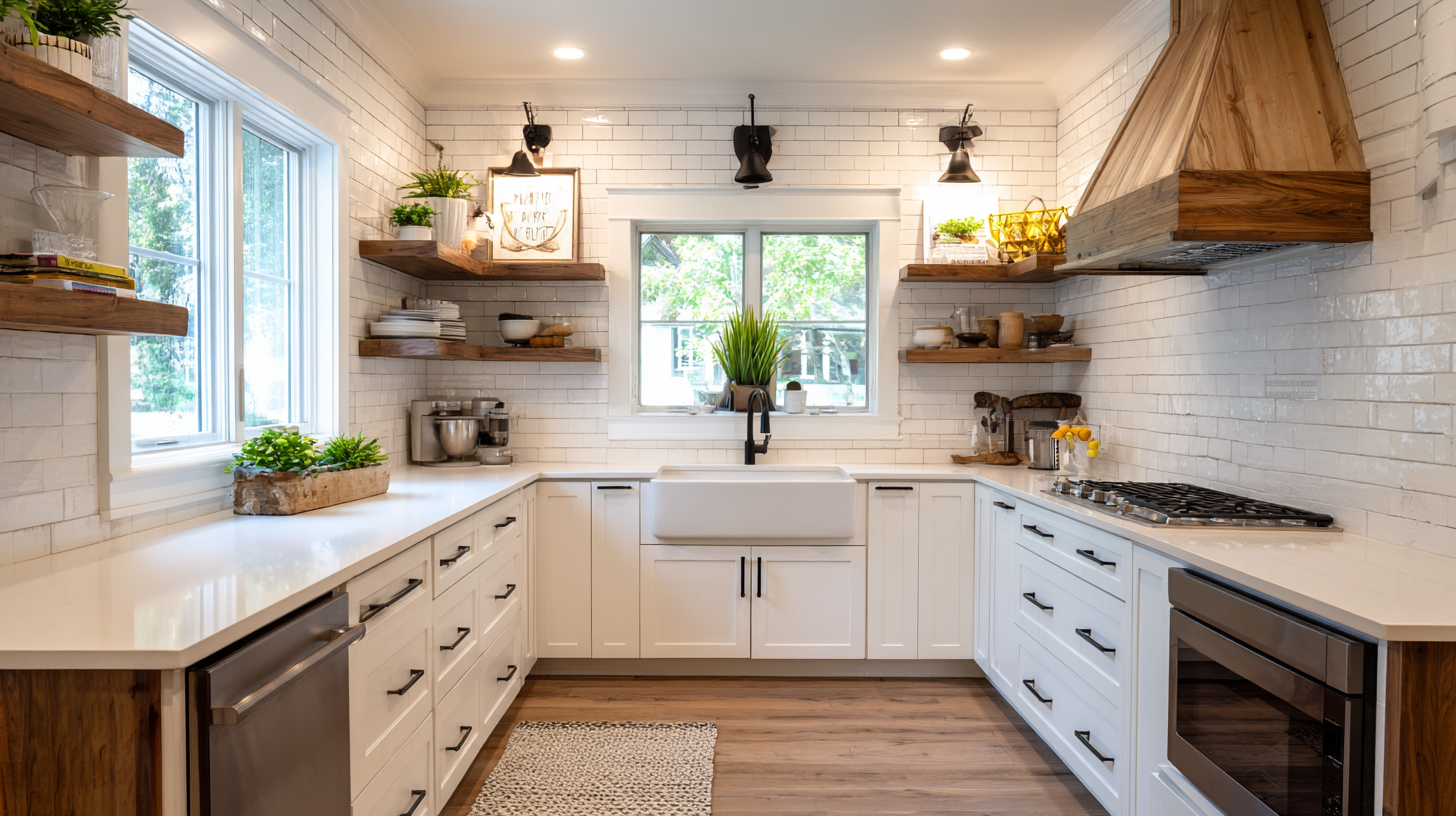
Shaker or beadboard cabinets bring a cozy, handcrafted feel to white kitchens. Their simple lines add just the right amount of detail without overwhelming the space.
Open wood shelves and classic white subway tile round out the look. The shelves add warmth, while the tile keeps it timeless and clean.
4. Transitional
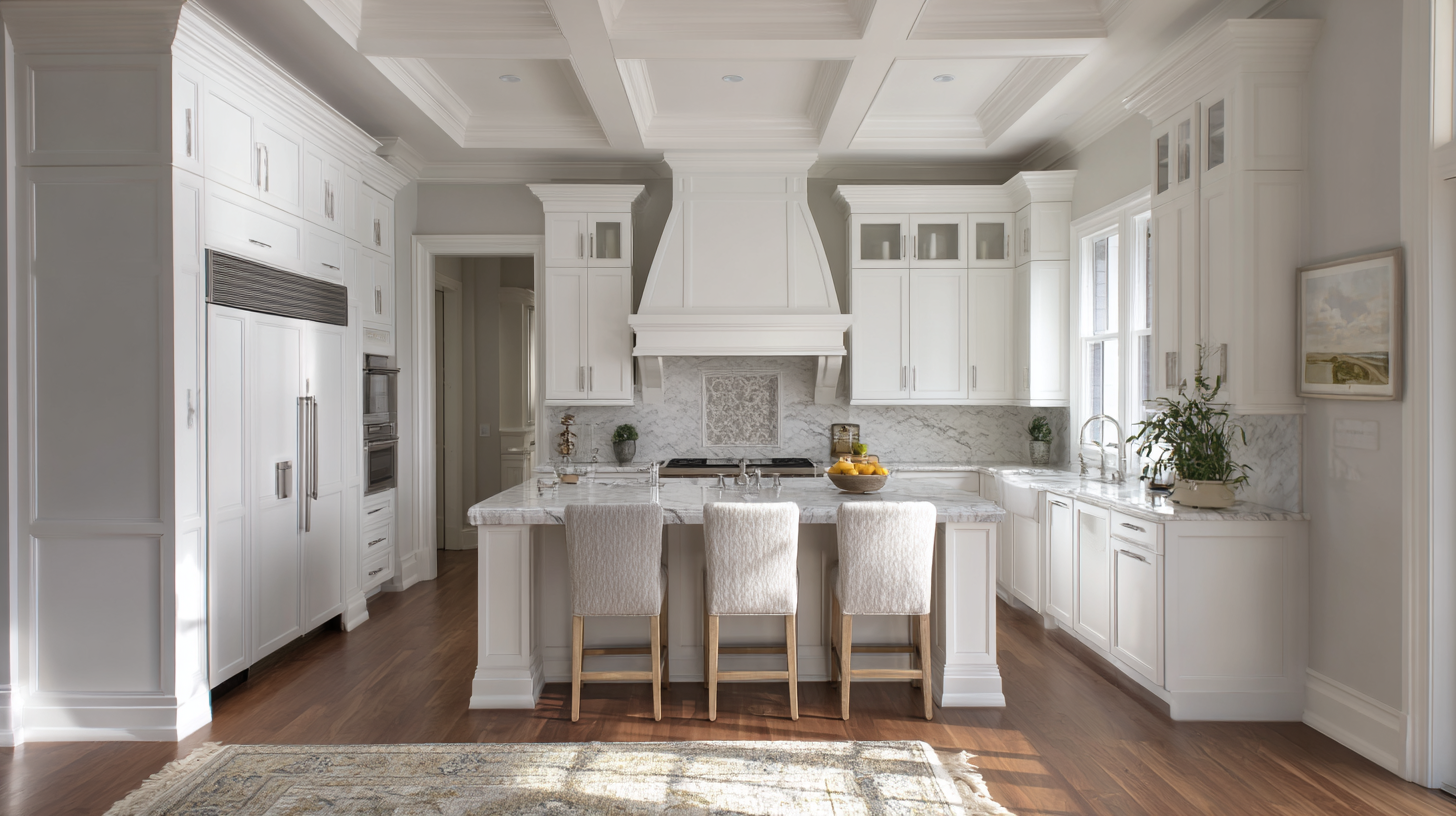
Transitional style blends modern simplicity with classic charm. You’ll see clean lines mixed with familiar shapes for a balanced look that feels fresh but not stark.
Brushed nickel or stainless steel hardware keeps it polished, while crown molding adds subtle detail without feeling overdone. It’s a great way to keep white-on-white interesting but approachable.
5. Scandinavian
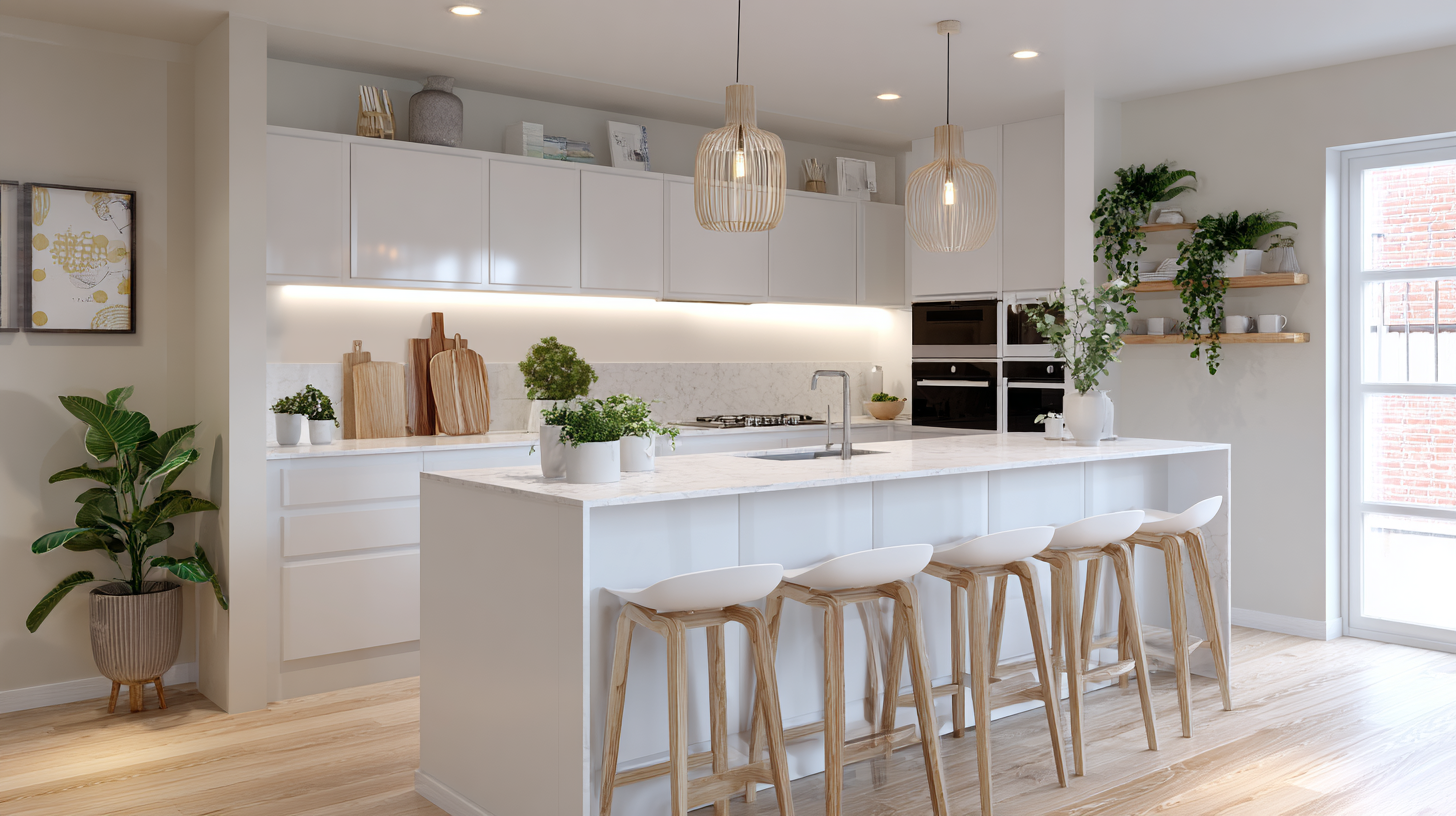
Scandinavian style loves an all-white base, cabinets, walls, and counters all in crisp tones. It creates a bright, airy space that feels peaceful and simple.
Natural wood accents, potted plants, and soft pendant lighting add warmth and life. It’s clean but cozy, with just enough texture to keep things inviting.
No matter your taste, white on white gives you a clean base to build on. It’s easy to layer in texture, color, and personal touches as your style evolves.
How to Add Depth to Your White Kitchen
Too much white can feel flat if you don’t layer it right. I kept this in mind when styling my kitchen, and it made a big difference.
| Element | Description | Impact |
|---|---|---|
| Backsplashes | Glossy white subway tiles for a classic look, or handmade zellige tiles or herringbone patterns for added texture. | Adds visual interest and texture to break up the white. |
| Hardware | Brass, matte black, or antique bronze handles and knobs. | Adds contrast, personality, and a touch of warmth. |
| Lighting | Bold pendant lights or wall sconces with metal or fabric shades. | Acts as a statement piece while warming up the space. |
| Floors | Natural wood, patterned tiles, or a darker tone underfoot. | Grounds the look, adding warmth and balance. |
| Decor | Layer in plants, wooden stools, woven baskets, and cookbooks. | Makes the space feel cozy, lived-in, and inviting. |
The goal isn’t to break the white, it’s to add depth to it. A few textures, colors, or natural touches can turn a plain space into one that feels full of life.
Common Mistakes to Avoid
I’ve made a few of these myself, and I’ve seen plenty of others run into them too. A white-on-white kitchen is stunning, but only if you plan carefully and avoid some common slip-ups.
- Mixing undertones: Don’t pair creamy cabinets with icy countertops unless there’s enough contrast
- Too much white: Without texture or accent materials, it can look flat and clinical
- Ignoring lighting: A white kitchen needs good lighting, or it will look gray or dull
- Choosing fussy materials: Marble is beautiful, but shows wear quickly if you don’t stay on top of care
- Skipping samples: Always test samples together and view them in both daylight and artificial light.
- Forgetting function: It’s easy to focus on looks, but make sure the space still works for how you cook and live
Planning ahead helps you avoid the kind of choices that look good in photos but fall short in real life. Small details like tone, lighting, and texture make a big difference once everything comes together.
Pros and Cons of All-White Kitchens
White kitchens are loved for their versatility, but they do come with trade-offs. If you’re thinking about going all white, it helps to weigh the good and the not-so-great before you commit.
| Pros | Cons |
|---|---|
| Feels timeless and clean | Easier to see crumbs and smudges |
| Makes the space feel bigger | Can feel cold if not styled well |
| Matches any accent color | Needs texture or pattern to avoid looking flat |
| Works with any design style | Shows wear more quickly without maintenance |
| Reflects natural light beautifully | May lack personality without layered elements |
| Easy to update with new decor | Not ideal for high-traffic, messy households |
If you like switching up your decor often, white gives you a flexible and easy-to-refresh base. Just be ready for a bit more upkeep to keep it looking sharp and intentional.
Care & Maintenance Tips
Different countertop materials need different care routines, and learning this the hard way can be frustrating. I’ve tested a few surfaces over the years, and each one has its own personality when it comes to upkeep.
If you want your counters to stay beautiful, it helps to know what they actually need, not just what looks good in a showroom.
- Quartz: Just warm, soapy water. Avoid harsh chemicals or anything abrasive. It’s low-maintenance and super forgiving.
- Marble: Use a pH-neutral cleaner. Wipe spills quickly and never use anything acidic, like vinegar or lemon juice. It’s gorgeous but needs babying.
- Corian: A non-abrasive sponge with mild detergent works great. Easy to maintain, but still be gentle with it.
- Granite: Use a stone-specific cleaner and reseal every year or two to keep it looking rich and protected.
If you cook a lot (like I do), it’s worth going with something that can handle the heat, spills, and splatters without stressing you out.
Low-maintenance doesn’t mean boring; it just means more time spent enjoying your kitchen instead of scrubbing it.
Final Thoughts
If you’ve been trying to decide whether to go with white countertops and white cabinets, I hope this helped clear things up.
No matter if you’re aiming for cozy farmhouse vibes or a slick modern space, white-on-white can work beautifully with the right touches.
Now that you’ve seen the different styles, materials, mistakes to avoid, and real kitchen examples, you should have a much clearer picture of what’ll work for your space.
Use this guide as a tool to shape your dream kitchen, and don’t be afraid to bring in your own style to make it feel like home.

